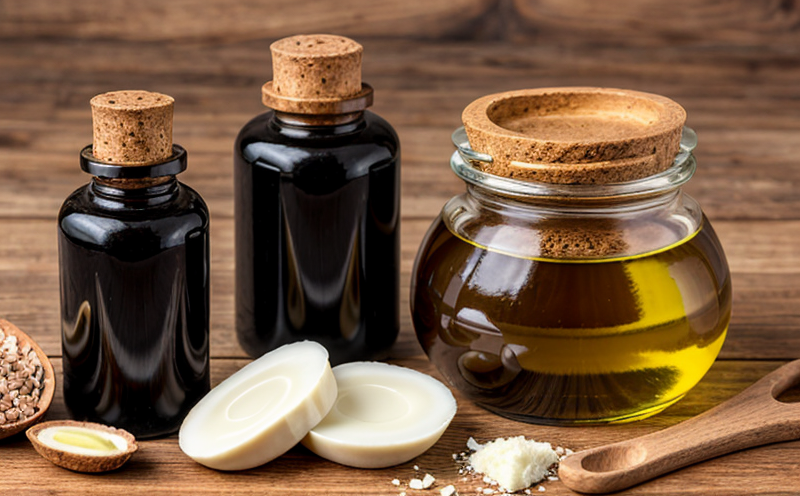ISO 3960 Peroxide Value Testing in Oils
The peroxide value (PV) test as specified by ISO 3960 is a critical analytical procedure used to assess the oxidative stability of vegetable and refined oils. This method quantifies the amount of lipid hydroperoxides present, which indicates the degree of rancidity or oxidation in fats and oils. Oxidation leads to the production of peroxide compounds, and as these increase, the oil becomes less stable and more prone to spoilage.
For quality managers and compliance officers, understanding the PV is essential for maintaining product integrity and ensuring adherence to international standards such as ISO 3960. The test involves the titration of a sample with iodine solution in the presence of sulfuric acid, where the amount of iodine consumed is directly proportional to the peroxide value.
R&D engineers can use this data to monitor the effectiveness of refining processes and to identify potential improvements in extraction techniques. Procurement teams benefit from PV testing as it allows them to source high-quality raw materials, ensuring that products meet both internal quality standards and customer expectations.
The peroxide value is a key parameter for assessing the shelf life and safety of fats and oils used in food manufacturing processes. It helps prevent the formation of harmful compounds during storage or processing, thereby enhancing product quality and consumer health safety. Compliance officers can ensure regulatory compliance with international standards by regularly monitoring PV levels.
The test procedure outlined in ISO 3960 is straightforward but requires precise execution to achieve accurate results. The sample must be prepared carefully, ensuring it represents the entire batch accurately. The method involves extracting a known quantity of oil into an aqueous solution and titrating with iodine under controlled conditions.
Understanding the significance of PV in fats and oils is crucial for industries that rely on these materials as raw ingredients or intermediates. For instance, in the pharmaceutical sector, peroxide value testing ensures that excipients used in drug formulations are stable and free from contamination that could affect efficacy. In the food industry, accurate PV measurements help maintain the nutritional quality of products like cooking oils and shortenings.
Furthermore, the test results can influence the decision-making process regarding storage conditions. For example, if a batch has an unexpectedly high peroxide value, it may indicate improper storage or handling, necessitating corrective actions to prevent further degradation.
Why It Matters
The significance of ISO 3960 Peroxide Value Testing in oils cannot be overstated. The PV is a direct measure of the oxidation state of fats and oils, which affects their stability, shelf life, and overall quality. High peroxide values indicate increased oxidative stress, leading to potential rancidity and reduced nutritional value.
For food manufacturers, maintaining low PV levels ensures product integrity and consumer safety. Oxidation can produce harmful compounds that may cause adverse health effects when consumed over time. By adhering to ISO 3960 standards, companies can ensure compliance with international regulations and protect their brand reputation.
The testing process is not only about quality control but also about environmental sustainability. Reducing waste by identifying and managing rancid oils early on helps minimize the release of volatile organic compounds (VOCs) into the environment, contributing to better air quality.
Industry Applications
| Industry Sector | Peroxide Value Testing Role |
|---|---|
| Pharmaceuticals | Ensures the stability and safety of excipients used in drug formulations. |
| Food Processing | Maintains product integrity by identifying rancid oils early on. |
| Bakery & Confectionery | Guarantees the quality and shelf life of fats used in baking. |
| Packaging | Aids in selecting appropriate packaging materials that protect oils from oxidation. |
| Sweeteners | Ensures the stability of fat-based sweeteners used in confectionery products. |
Customer Impact and Satisfaction
Implementing ISO 3960 Peroxide Value Testing in your supply chain can significantly enhance customer satisfaction and loyalty. By ensuring product quality and safety, you demonstrate commitment to maintaining high standards of integrity and reliability.
Customers expect products that are safe for consumption and have a consistent shelf life. Regular PV testing allows you to meet these expectations by identifying potential issues early on and taking corrective actions promptly. This proactive approach fosters trust and strengthens relationships with your customer base, leading to increased satisfaction and repeat business.





